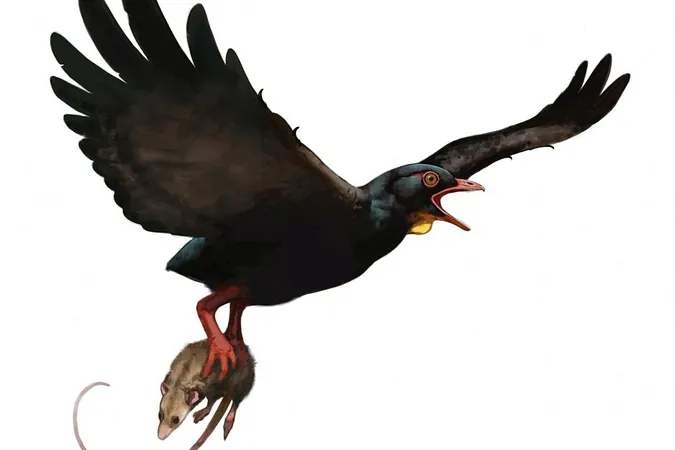
Unearthing the Past: The Oldest Birds of Prey Coexisting with T. rex in North America
2024-10-09
Author: Li
Unearthing the Past: The Oldest Birds of Prey Coexisting with T. rex in North America
In an astonishing revelation, researchers have identified the oldest-known birds of prey that thrived alongside the mighty Tyrannosaurus rex in what is now western North America, approximately 67 million years ago. Fossils recently discovered in Montana unveil two new avian species from the Cretaceous Period, providing a glimpse into an ecosystem rich with predatory life.
The footprints of the most formidable predator of its time, T. rex, are well-known, but the discovery of these ancient raptors sheds light on a lesser-known chapter of prehistoric life. The fossils, which were unearthed from the renowned Hell Creek Formation—a site that has yielded countless dinosaur bones—belong to a genus known as Avisaurus. One species, Avisaurus darwini, resembles a large hawk with an impressive wingspan of up to 4.25 feet (1.3 meters).
These ancient birds are characterized by anatomical features reminiscent of modern birds of prey, particularly their tarsometatarsus, a critical foot bone that suggests capabilities for capturing and carrying prey akin to how current hawks, owls, and eagles operate. "These birds may have been discerning hunters, likely preying on small mammals, lizards, and even other birds," explained Alex Clark, a doctoral student in evolutionary biology and lead author of the study published in the journal PLOS ONE.
The enantiornithines, a prominent bird group during the age of dinosaurs, included these newly discovered species. Remarkably, while their lineage did not survive the mass extinction event triggered by an asteroid strike, their evolutionary adaptations have perplexed scientists. Clark notes, "The morphological traits necessary for raptorial behaviors have likely evolved multiple times across different avian groups."
Data on the anatomical details reveals intriguing possibilities about these birds. Their foot bones showcase robust muscle attachment points that may indicate powerful leg muscles capable of gripping prey efficiently. Features such as grooves on their tarsometatarsus could suggest the presence of tenacious toes, further assisting them in subduing their catch.
Interestingly, two more species in this prehistoric avian family have piqued interest. A third newly identified bird, Magnusavis ekalakaensis, also hails from the same period, though its behavior and ecological role remain shrouded in mystery.
This discovery enriches our understanding of the intricate web of life at the end of the dinosaur age. It paints a compelling picture of a dynamic ecosystem, capable of sustaining the colossal T. rex while simultaneously nurturing a diverse array of smaller vertebrates, including these primitive raptors.
As paleontologists continue to dig deeper into our planet's prehistoric past, many questions remain unanswered. What sort of adaptations did these birds possess? Did they have teeth like some of their modern relatives, or were their beaks shaped differently? Only time and continued research will unveil these secrets, but the confirmation of avian diversity in this ancient era sets the stage for fascinating discoveries in the field of paleontology.
Stay tuned as we unlock more mysteries of the past!



 Brasil (PT)
Brasil (PT)
 Canada (EN)
Canada (EN)
 Chile (ES)
Chile (ES)
 España (ES)
España (ES)
 France (FR)
France (FR)
 Hong Kong (EN)
Hong Kong (EN)
 Italia (IT)
Italia (IT)
 日本 (JA)
日本 (JA)
 Magyarország (HU)
Magyarország (HU)
 Norge (NO)
Norge (NO)
 Polska (PL)
Polska (PL)
 Schweiz (DE)
Schweiz (DE)
 Singapore (EN)
Singapore (EN)
 Sverige (SV)
Sverige (SV)
 Suomi (FI)
Suomi (FI)
 Türkiye (TR)
Türkiye (TR)